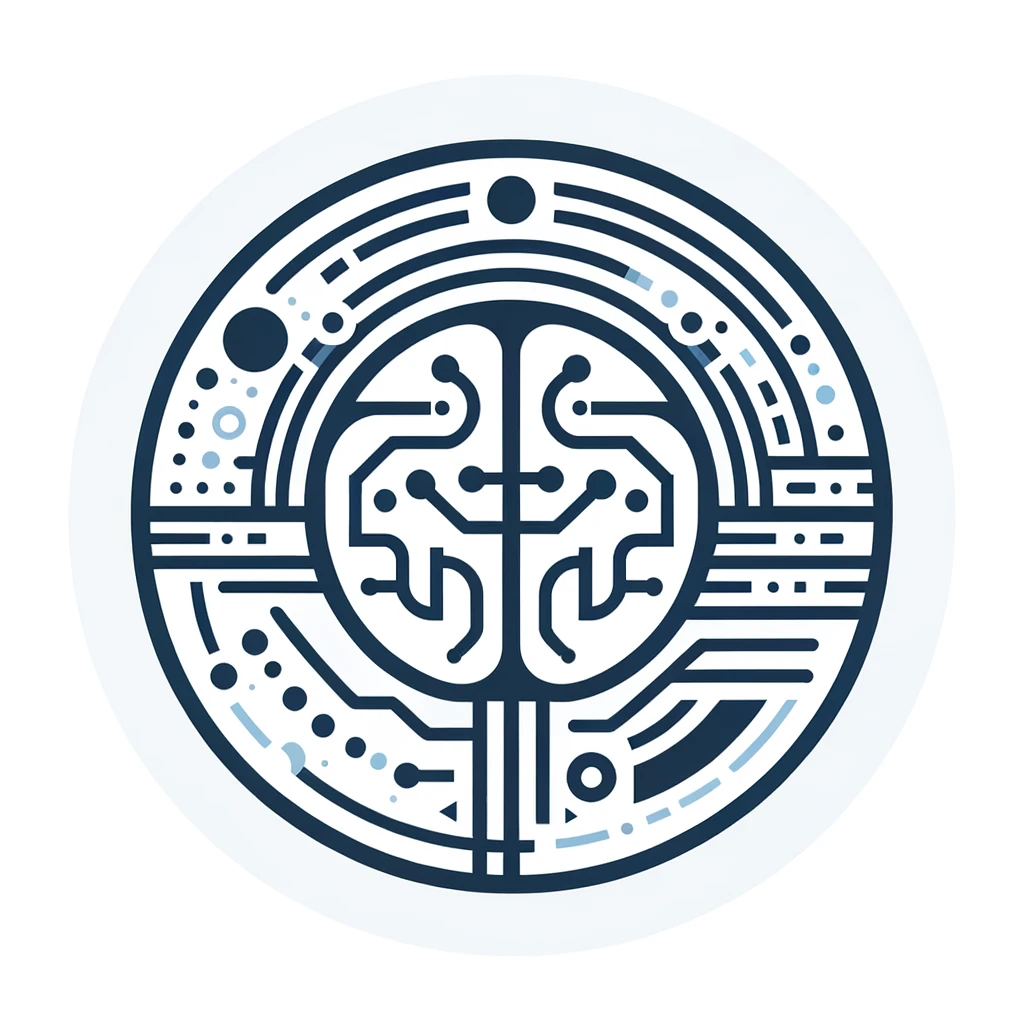Beyond Chat: Exploring the Advanced GPT Capabilities in ChatGPT's Latest Update

In the rapidly evolving landscape of artificial intelligence, OpenAI’s ChatGPT has emerged as a pivotal tool for users seeking to leverage the power of AI for a broad spectrum of applications. The latest update to ChatGPT, powered by GPT-4, introduces a groundbreaking feature that significantly enhances its versatility and effectiveness: the integration of custom ChatGPTs directly into the chat interface. This development opens up a new realm of possibilities for personalized and efficient AI interactions.
Introduction to ChatGPT’s GPT-4 Update
OpenAI’s ChatGPT has been at the forefront of innovation, consistently pushing the boundaries of what AI can achieve in natural language processing. The recent GPT-4 update introduces a groundbreaking feature that significantly enhances user interaction and functionality: the integration of custom ChatGPTs directly into the user interface. This advancement is not just an incremental update; it represents a major leap forward in the customization and versatility of ChatGPT.
The core of this update revolves around the ability for users to incorporate specialized ChatGPTs into their ongoing conversations. By utilizing the “@” symbol, users can now effortlessly switch between different GPTs that have been tailored for distinct tasks or areas of expertise. This means that within a single conversation thread, one can engage with a variety of ChatGPTs, each with its unique set of capabilities, knowledge base, and custom instructions designed for specific use cases.
Imagine working on a project that requires expertise in multiple fields, such as content creation, technical analysis, and graphic design. Traditionally, toggling between different tools or platforms for each task could disrupt your workflow and slow down productivity. However, with ChatGPT’s GPT-4 update, you can access a custom GPT for content writing, another for technical queries, and yet another for design suggestions, all within the same chat window. This seamless integration of custom ChatGPTs empowers users to streamline their workflows, enhance efficiency, and unlock new levels of productivity.
Furthermore, the introduction of this feature addresses a common challenge faced by many users: the need for specialized knowledge or responses that go beyond the general capabilities of ChatGPT. Whether you’re a developer requiring code-specific assistance, a marketer in need of creative copywriting, or a student looking for tutoring in a particular subject, the ability to bring in custom ChatGPTs tailored to these needs transforms the chat interface into a multi-disciplinary tool.
This article delves deep into the capabilities and potential applications of the GPT-4 update, offering insights into how users can leverage custom ChatGPTs to revolutionize their work and creative processes. Through practical examples and step-by-step guides, we’ll explore the nuances of using the “@” symbol to enhance your ChatGPT experience, showcasing how this feature can be a game-changer in various professional and personal contexts.
Understanding Custom ChatGPTs
Custom ChatGPTs represent a significant advancement in the application of AI technology, allowing individuals and organizations to tailor the capabilities of ChatGPT to meet their unique requirements. This innovation means that users are no longer constrained by the one-size-fits-all approach of standard AI models. Instead, they can design and utilize GPTs that are specifically optimized for their tasks, whether it be for generating educational content, providing customer service, or facilitating in-depth technical analyses.
At the core of custom ChatGPTs is the concept of specialized training. Unlike generic models, these GPTs are fed with data and instructions relevant to a specific field or task. This targeted training approach enables the AI to develop a deeper understanding of the subject matter, resulting in more accurate and contextually appropriate responses. For example, a custom ChatGPT designed for medical consultation can understand and use medical terminology more effectively than a standard model, offering more precise advice based on symptoms described by users.
The process of creating a custom ChatGPT involves selecting a base model and then refining it with a dataset that reflects the desired expertise or knowledge base. Users can feed the model with text examples, question-answer pairs, and other forms of data that embody the tasks the GPT will perform. Over time, through iterative training and feedback, the model becomes increasingly adept at handling the specific types of inquiries or tasks it was designed for.
Moreover, these custom models can be integrated into various platforms and services, enhancing the user experience by providing immediate, on-point answers to complex queries. This integration capability is particularly beneficial for businesses looking to improve customer interaction, educational platforms aiming to offer personalized learning experiences, and content creators seeking to automate and refine their content generation process.
Custom ChatGPTs also support a collaborative development environment, where multiple users can contribute to the training process, share feedback, and refine the model’s performance over time. This collaborative approach not only accelerates the model’s learning curve but also ensures that it remains up-to-date with the latest information and trends within its designated domain.
In summary, the emergence of custom ChatGPTs is a testament to the evolving landscape of AI, where the focus is shifting towards personalization and specificity. By enabling users to create and employ AI models that are finely tuned to their specific needs, custom ChatGPTs are opening up new avenues for innovation, efficiency, and creativity across a wide range of applications.

The “@” Symbol: A Gateway to Efficiency
The introduction of the “@” symbol in ChatGPT’s GPT-4 update represents a leap forward in user interface design and functionality within the realm of conversational AI. This seemingly simple addition transforms the way users interact with multiple GPTs, making the process more intuitive and significantly more efficient.
When a user types the “@” symbol followed by the name of a custom GPT, ChatGPT presents a list of GPTs that match the query, highlighting those that have been recently used or pinned for quick access. This functionality is akin to tagging someone in a social media post; it’s a direct call to a specific entity within a broader platform. For ChatGPT, this means being able to summon the exact tool needed for a task without navigating away from the current conversation.
The practical implications of this feature are vast. Imagine working on a complex project that requires input from various specialized domains – from data analysis to creative writing. Previously, managing this multifaceted task would require switching between different tools or sessions, disrupting the flow of work and fragmenting the user’s focus. With the “@” functionality, however, users can effortlessly call upon a custom ChatGPT trained in data analysis to interpret results and then immediately summon another GPT specialized in creative writing to draft a report based on those interpretations. All of this can be done within the same chat window, preserving the context and continuity of the conversation.
This feature not only saves time but also enhances the user experience by maintaining a seamless workflow. Users no longer need to remember specific commands or navigate through menus to access different GPTs. Instead, the “@” symbol serves as a universal trigger for engaging with custom AI assistants, democratizing access to specialized knowledge and skills.
Moreover, the “@” symbol functionality encourages exploration and experimentation with custom GPTs. Users might be more inclined to explore the capabilities of various GPTs when they can do so effortlessly within a single conversation. This could lead to the discovery of new use cases and innovative applications of AI technology, further expanding the horizon of what’s possible with ChatGPT.
In essence, the “@” symbol is more than just a feature; it’s a gateway to efficiency and creativity in the use of conversational AI. By streamlining the way users interact with multiple GPTs, it opens up new possibilities for productivity and collaboration, making the power of AI more accessible and adaptable to individual needs and workflows.

Practical Applications and Examples
Content Creation Workflow Enhancement
The enhanced content creation workflow, as empowered by the GPT-4 update, is a game-changer for creators and professionals alike. Imagine a scenario where a YouTube content creator is planning a new series. Initially, they engage with a custom ChatGPT tailored for brainstorming video concepts. This specialized GPT, upon receiving input about the desired theme or audience, swiftly generates a list of potential video topics, each designed to resonate with the target demographic.
Once a topic is selected, the creator can then utilize the “@” symbol to switch effortlessly to another GPT that excels in structuring video content. This GPT, trained specifically for scriptwriting and content planning, takes the chosen topic and develops a comprehensive outline. It breaks down the video into key sections, such as the introduction, main content, and conclusion, and suggests engaging ways to present the material. This could include innovative presentation techniques, dialogue suggestions, and even tips for visual storytelling.
The power of this approach lies in its fluidity and the ability to maintain a high degree of specialization throughout the process. Each custom GPT brings its expert-level focus to bear on its respective stage of content creation, ensuring that every aspect of the video is crafted with precision and expertise. The “@” functionality acts as the conduit through which these diverse skills are woven together into a cohesive and effective workflow.
Furthermore, this streamlined process significantly reduces the time and effort traditionally required to switch between different tools or platforms. By keeping all these resources within a single chat interface, creators can maintain their creative flow and focus, leading to higher quality content produced in a shorter amount of time.
In essence, this enhanced workflow represents a paradigm shift in content creation, where the agility and intelligence of AI are harnessed to support and amplify human creativity. It’s a perfect blend of technological innovation and creative expression, opening up new horizons for content creators across the globe.
Educational and Learning Scenarios
The application of custom ChatGPTs in educational and learning scenarios presents a revolutionary approach to personalized learning. For example, a student preparing for exams could start by interacting with a GPT specifically trained for mathematics. This GPT could offer step-by-step explanations of complex algebraic concepts, provide practice problems, and even adapt to the student’s learning pace, ensuring a thorough understanding of the subject.
When the student needs to shift focus to history, a simple use of the “@” symbol brings forth another custom GPT, this one steeped in historical knowledge. Here, the student can delve into detailed discussions about historical events, figures, and timelines. The history GPT could simulate interactive quizzes, offer insights into historical contexts, and even compare and contrast different historical periods, enriching the student’s understanding and retention of the subject matter.
Furthermore, this technology can be extended to language learning. A custom ChatGPT designed for language practice can engage students in conversational drills, vocabulary exercises, and even cultural lessons pertinent to the language being studied. This GPT could mimic natural conversation, allowing students to practice speaking, listening, and responding in a safe, AI-guided environment.
The beauty of this approach lies in its adaptability and the ease with which students can navigate between different subjects. The “@” symbol becomes more than just a tool; it transforms into a gateway to a diverse, rich educational ecosystem, where each subject’s GPT is like a knowledgeable tutor, ready to assist, challenge, and inspire students in their learning journey.
This dynamic, responsive learning environment fostered by custom ChatGPTs is not only beneficial for individual study but can also be integrated into classroom settings. Teachers can employ these AI tools to supplement their teaching, provide additional resources for students needing extra help, or even to introduce new, interactive methods of learning.
In summary, the use of custom ChatGPTs in education via the GPT-4 update not only makes learning more accessible and tailored but also introduces a level of interactivity and engagement that traditional educational methods may lack. It’s a stride towards a future where education is not just a one-way transfer of information, but a dynamic, personalized experience that caters to the unique needs and learning styles of each student.
Technical Support and Problem-Solving
The utilization of custom ChatGPTs for technical support and problem-solving represents a transformative step in customer service and technical assistance. Consider a scenario where a user is encountering issues with a complex software suite. With the GPT-4 update, they can initiate a conversation with a custom GPT specifically trained in that software. This GPT would possess a deep understanding of the software’s functionalities, common issues, troubleshooting methods, and best practices.
When the user needs support with a different aspect of their technological setup, such as a specific hardware device, they can seamlessly switch to another GPT dedicated to hardware support. This GPT could be adept in guiding users through hardware setups, diagnosing issues, and providing step-by-step instructions for repairs or optimizations. The transition between these GPTs is made effortless and intuitive with the “@” symbol, effectively turning the chat into a comprehensive tech support hub.
This approach is particularly advantageous for users dealing with interconnected systems or multi-faceted tech environments. For instance, a graphic designer working with advanced graphic software and high-end hardware could benefit immensely. They could consult a software-specific GPT for optimizing their design workflow and immediately switch to a hardware-focused GPT for advice on maximizing their system’s performance for design tasks.
Moreover, in organizational settings, custom GPTs can be a boon for IT departments. They can create a suite of GPTs, each specializing in different aspects of the organization’s technology stack, from CRM systems to network infrastructure. Employees encountering technical issues can engage with the relevant GPT for quick, accurate advice, reducing downtime and enhancing productivity.
This dynamic application of custom ChatGPTs in technical support transcends traditional boundaries of customer service. It provides users with instant access to specialized knowledge, tailored exactly to their current needs. This not only enhances user experience but also streamlines the problem-solving process, making it more efficient and effective. In essence, it embodies a future where technical support is not just reactive, but proactive, personalized, and seamlessly integrated into the user’s technological ecosystem.

The Future of Custom ChatGPTs
The advent of custom ChatGPTs and the incorporation of the “@” symbol functionality is a pivotal moment in AI, signaling a shift towards a more personalized and dynamic form of interaction. As we look to the future, the implications of this development are profound and far-reaching.
In the near term, we can expect to see a surge in the customization of GPTs, with users fine-tuning their AI models to suit an ever-expanding array of applications. From specialized educational tools to advanced project management assistants, the scope for customization is virtually limitless. Users will have the ability to create a suite of GPTs, each a specialist in its own right, and switch between them seamlessly, crafting a highly personalized AI experience.
Looking further ahead, the potential for these custom ChatGPTs to learn and adapt over time will lead to even more sophisticated interactions. As users engage with their GPTs, the AI will continuously refine its understanding and responses, becoming an ever more efficient and effective assistant. This ongoing learning process will not only improve the user experience but also drive innovation in AI capabilities.
Additionally, the integration of multiple GPTs into single, cohesive systems could revolutionize entire industries. In healthcare, for instance, custom GPTs could be developed for different specialties, such as radiology, cardiology, or neurology, each capable of assisting with diagnosis, treatment planning, and patient education. Similarly, in the realm of business, companies could deploy a range of GPTs tailored to various aspects of operations, from market analysis to customer relations, optimizing efficiency and decision-making across the board.
Moreover, as the technology matures, we might witness the emergence of AI ecosystems where custom GPTs can interact not only with users but also with each other. This could facilitate a new level of collaboration and problem-solving, with AI models pooling their expertise to tackle complex challenges.
In essence, the future of custom ChatGPTs represents a paradigm shift in our interaction with AI. No longer limited to generic responses, AI can now offer tailored, nuanced, and contextually aware assistance, enhancing our capabilities and transforming how we work, learn, and solve problems. The “@” symbol, a small yet powerful addition, is the key that unlocks this new realm of possibilities, marking the beginning of a more adaptive, intelligent, and personalized AI era.
Conclusion
ChatGPT’s latest update, featuring custom ChatGPT integration and the “@” symbol functionality, represents a significant leap forward in making AI more accessible and tailored to individual needs. By enabling users to create and utilize custom GPTs for a wide range of applications, OpenAI has opened the door to a future where the possibilities of AI are limited only by one’s imagination. As we continue to explore and expand the boundaries of what AI can achieve, the role of custom ChatGPTs in shaping the future of technology and society cannot be understated.
FAQ
The GPT-4 update in ChatGPT introduces custom ChatGPT integration and the “@” symbol functionality, enhancing user experience and enabling personalized AI interactions across various applications.
The “@” symbol allows users to switch seamlessly between different custom GPTs within the same chat, streamlining workflows and providing access to specialized knowledge in a single interface.
Yes, custom ChatGPTs can significantly enhance the learning experience, offering personalized and interactive assistance in various subjects, from mathematics to history.
The update benefits content creators by providing custom GPTs for different stages of content creation, enabling a seamless and efficient workflow within the same chat interface.
The future of custom ChatGPTs suggests a shift towards more personalized and nuanced AI interactions, promising advancements in AI technology and its applications in various fields.
